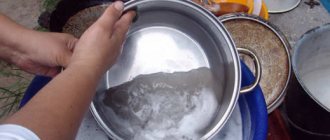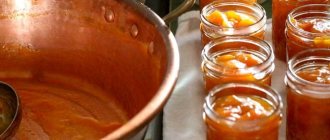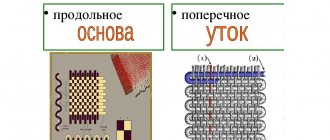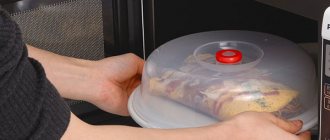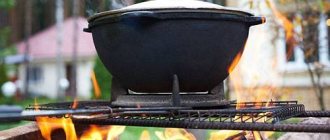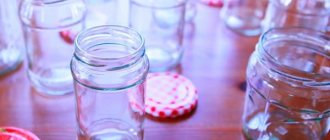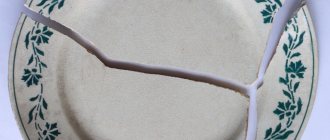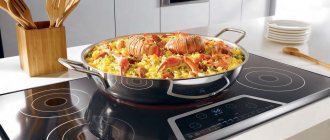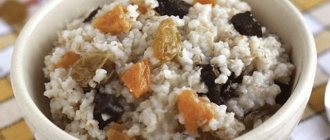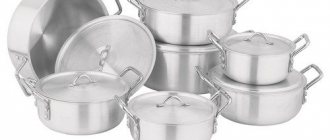Kitchen utensils must fulfill their main function - to be useful when preparing delicious dishes. Food should not lose its basic qualities when using utensils that are safe for human health. A properly selected aluminum frying pan will help you avoid unnecessary waste of money.
Aluminum pots and pans are very popular among housewives.
Characteristic
During production, dishes are cast from aluminum, like plaster figures . The metal is melted and poured into the prepared mold.
A quality product has a thickness of 5-10 mm . These utensils can be used daily. After cooking, you need to transfer the food to a storage container.
Made from cast aluminum:
- Pots of different sizes.
- Any types of frying pans (ladle, pancake pan, etc.).
- Braziers.
Most frying pans have a non-stick coating. During operation, it is permissible to use any type of stove.
- Before using a new product, it is advisable to wash the surface with warm water and detergent.
- If a dark coating has formed, the dishes must be treated with vinegar , or boil the solution in it for 10 minutes (add 0.5 tsp of citric acid to 1 liter of water).
- It is prohibited to store various pickles : cabbage, cucumbers, mushrooms, etc.
- When cleaning, do not use chemicals with a high alkali content.
Teflon
Cookware with this coating is very popular because you can cook in it without oil. However, in pursuit of reducing calories, we harm our health. Such pans cannot be overheated: the maximum temperature is 180 °C, and if higher, microcracks and micropores appear in the Teflon coating. Through them, food interacts with the metal base of the pan. It's about the same story as with chipped enamel dishes.
“It’s not so much the Teflon itself from the frying pan that is harmful - it has been proven that the non-stick coating is not absorbed by the body, unlike Teflon powder, which is used in production and causes dangerous diseases in workers, which has been proven by numerous examinations,” says Yuri Gaborets. – The metal from which the frying pan is made is harmful, most often it is aluminum. However, Teflon also contains acid, which can cause various diseases, especially of the heart and blood vessels.”
Advantages of cast aluminum cookware
- Durability . Aluminum is one of the most durable materials. The product retains its technical characteristics after years of use. With proper care, pans and pots will last for several years. For greater reliability, the body is thicker. Thus, the dishes can withstand long-term use, overheating and falls.
- Thermal conductivity . The cookware heats up quickly during cooking. Heat is evenly distributed throughout the entire structure. The food does not burn, all sides are equally heated. The prepared dish remains hot for a long time.
- Lightness . Most products are too heavy, which is ineffective during operation. Aluminum is widely used in large industries due to the lightness of manufactured products. The dishes are easy to move around the kitchen. The shelves do not bend or break, as often happens with steel models.
- Versatility . You can cook food in aluminum cookware on any type of hob (gas, electric, glass-ceramic, etc.). If you purchase a model for use on glass ceramics, the bottom thickness should be more than 4-6 mm.
- Cooking . Models with thick walls and a bottom are most suitable for: frying meat and fish, stewing vegetables and various side dishes, baking chicken and turkey. The food is not fried, but simmered inside the cookware. This method gives a pleasant aroma and taste.
- Heating _ Maximum temperature - 400 degrees. This parameter depends on the quality of production, materials and coating. When compared with other models, cookware made of cast aluminum can withstand the highest temperature loads.
- Corrosion . Upon contact with air, the aluminum surface becomes covered with an oxide film. This provides high-quality protection against rust formation.
- Variety of models . The industry offers a wide selection of cookware. An experienced housewife knows which model she needs. You can purchase a set of dishes that includes several products at once. This will provide significant savings compared to purchasing individual models.
- Price . Cookware made from cast aluminum is much cheaper than its cast iron counterparts. For the price of 1 product you can purchase 2-3 aluminum models. At the same time, technical characteristics do not depend on cost. However, you cannot choose the cheapest products. It is important to correctly compare cost and technical characteristics.
- Cleaning . A quality product has no pores. Contaminants do not penetrate into the structure of the dishes. This makes cleaning much easier. It is enough to use household products and warm water. Models with titanium or diamond coating are easy to clean in the dishwasher. Teflon must be washed by hand.
Accessories for aluminum frying pan
It is difficult to imagine dishes that do not have additional elements. Their presence/absence often affects the functionality of the product.
Pen
In this case, we are talking about removable and non-removable components of the frying pan design. Its choice depends on the need to use the dishes in the oven and directly on the gas stove. Often it can be purchased as an additional accessory to the frying pan.
Cast aluminum is much stronger due to the thickness of the walls and bottom, and due to the structure of the metal. Accordingly, the material is not afraid of mechanical damage.
The handle can be made of plastic, which does not make this material less functional. You cannot get burned when using it, because modern models of frying pans do not involve heating the handle.
Lid
Quite often this accessory is not provided for the frying pan. You can buy it in a separate set. Ideally, the lid should be made of aluminum. Stainless steel or high-quality silicone will also work in this case.
Cast aluminum does not wear out or deform over time.
The lid can be matched to any model that matches it in diameter. Its sizes usually vary from 18 to 28 cm.
Disadvantages of cast aluminum models
- Storing dishes . After cooking, food should not remain inside aluminum cookware for a long time. The metal reacts with organic acids. Aluminum gets into dishes and then into the human body, which leads to serious poisoning.
- Chemical reaction . Due to the nature of the material, overly spicy and sour foods should not be cooked in the cookware. The aluminum model is not suitable for making marinade and jam. During the process, small particles settle on the products.
- Constant control . Despite modern coating and processing techniques, food can still burn. It is necessary to constantly monitor the cooking process. An overcooked dish will lose its exquisite taste, and in the worst case, it will burn and spoil.
- Abrasive elements . When cleaning, it is prohibited to use products containing abrasives. They can damage the surface of the cookware. The product will become unusable.
- Damage . Mechanical impact can damage the dishes. The model cannot be restored. You'll have to buy a new product.
- Harm . Experts say that when using aluminum cookware, an excessive dose of metal enters the human body. Its high concentration can cause food poisoning and the development of various diseases. The study of this issue has not yet been completed. It is impossible to say for sure about the dangers of aluminum models. If you follow the operating instructions, the product does not pose a danger to human health.
Non-stick coating: harm | ABC of health
To maintain health, it is important not only to eat healthy food and provide the body with feasible physical activity. The dishes in which food is cooked can “saturate” the food with dangerous chemical compounds. It is important to follow the rules for using kitchen utensils, depending on the materials from which they are made.
The non-stick coating is a substance called polytetrafluoroethylene (the simpler and more common name for the material is Teflon).
The technology, originally used for military developments, eventually became widespread in everyday life. Thus, a frying pan with this coating has a smooth surface, requires the addition of less oil when frying, is not prone to corrosion, and is easy to clean.
In general, such cookware is safe as long as it is not heated to very high temperatures. When the non-stick coating overheats, the Teflon molecules begin to release perfluorooctanoic acid, which is essentially a carcinogen.
The substance belongs to the family of perfluorinated compounds. It is found not only in the coating of cookware with a non-stick effect, but also in the walls of the oven, microwave oven, bags in which fast food is usually packaged, there is this acid in shampoo and even in the composition of fabrics for sewing clothes.
From all these sources, the element enters the body, provoking the development of tumors, obesity, problems with the thyroid gland, liver, kidney function, and causing infertility. The half-life of perfluorooctanoic acid in the human body is about four years.
Safety precautions when using non-stick cookware
1) Never heat an empty pot or pan.
When the cookware is empty, heating to high temperatures occurs very quickly, which leads to the release of hazardous perfluorooctanoic acid.
2) Monitor the temperature.
The critical indicator is the heating temperature of the cookware to 250C. This seems like a very high figure, but in reality this value is achieved very quickly.
Cook food on low to medium heat. Even at low temperatures, the coating will allow you to get the desired crust, so there is no point in heating the container more.
When using electric stoves, choose those whose hob heats up slowly and maintains a stable temperature longer.
3) Use a hood.
This will reduce the chance of absorbing harmful vapors released when the cookware heats up.
Turn on the hood even when cooking over low or medium heat.
4) Choose heavier pots and pans.
Such dishes heat up more slowly (which means that the synthesis of substances hazardous to health does not occur). At the same time, it retains heat better and allows you to cook dishes even at low temperatures.
5) Do not use abrasives to clean dishes.
They scratch the non-stick coating, as a result of which particles of chemical substances enter the body, which, naturally, cannot be absorbed by it and turn into toxic waste. Therefore, it is necessary to get rid of dishes whose coating is already damaged.
6) Change your favorite pans every two years.
This measure may seem wasteful, but it is not superfluous - even with careful handling, after two years the coating becomes unsafe.
A solution may be to rotate pots and pans instead of using the same utensils every day.
An alternative to the popular Teflon is to use the familiar cast iron cookware. It has a number of properties, which makes it indispensable for use by anyone who adheres to a healthy diet.
Is it worth purchasing cast aluminum cookware?
For professional cooking, aluminum cookware is the best option. It allows you to prepare a variety of dishes without changing the set . All significant shortcomings can be eliminated if the product is used correctly. With proper care, high quality and technical characteristics will remain for several years.
To prepare pickles and jams, you will need a model made of a different material to avoid chemical reactions. It is important to remember that you cannot store food for a long time in aluminum containers.
Source
What is aluminum
Aluminum is a lightweight metal that lends itself well to casting and machining. It is malleable, conducts heat well and does not rust, since an oxide film forms on the surface of the aluminum product.
In the old days, aluminum was a very valuable metal. Only rich people could afford to wear jewelry made of this light silver-white metal. Now it is used in the food industry for the production of cookware and baking foil. It has long been popular in the aviation industry, construction, and heating engineering, as it is lightweight and cannot be oxidized.
Garage Recipes
There are several garage recipes that will help you make anti-oxidation products.
Boiling soda
Ordinary boiled water will help remove new traces of oxide. The liquid must be boiled in a small saucepan in advance. Then the boiling water is poured into a basin in which all parts that need cleaning will be soaked. The soaking time lasts about 3-4 hours. Then all products are washed and wiped from any remaining water. If the oxides have not disappeared, you will have to use other, more effective means.
See also
How and with what to clean a leather bag at home
Borax
A dense oxidized film can be removed using a special pharmaceutical borax. To restore an aluminum product, perform the following steps:
- add 10-15 grams of borax to a glass of water;
- stir 3-4 drops of ammonia into the mixture;
- treat the metal coating with the prepared liquid;
- after forty minutes, the remaining composition is washed off from the surface.
Sodium hydroxide
You can remove a layer of stubborn dirt with caustic soda. The advantages of this procedure include the fact that it is easy to carry out at home. The product in an amount of 150-200 grams is added to 7-8 liters of water and mixed thoroughly. It is necessary to use heated water, the temperature of which is 60-80 degrees. The part should be washed with the prepared sodium solution.
Coca Cola
This carbonated drink has excellent cleaning properties that help restore contaminated aluminum coatings. Several liters of Cola are poured into a saucepan. Then the product is placed in it and soaked for about an hour. During this time, the darkening should completely disappear.
If Cola did not help cope with the oxide, then you will have to use a more effective remedy.
Briefly about the alloys used
The main types of alloys used in the production of kitchen utensils:
- Technical aluminum A5. A clean, soft metal with good thermal conductivity. Based on it, alloys AK7 and AK9 are produced (safe for health, but with greater hardness).
- Cast aluminum is used in the production of thick-walled cookware: duck pots, frying pans, cauldrons. The main advantages are increased heat capacity and low weight.
- Bimetallic sheets. They are used in the production of stamped products that retain the main property of aluminum - high thermal conductivity with increased strength.
Famous brands of aluminum frying pans
Each company producing such goods focuses on the use of a specific material.
- Ballarini.
The Italian company specializes in the production of ceramic-coated frying utensils. Buyers also noted the stylishness of the product, which implies its elegance and high strength. Ballarini offers to purchase aluminum containers in the form of frying pans, saucepans, and lids for these utensils. Do you want to buy a quality frying pan? Then pay attention to the Ballarini brand. - Kukmara.
A foreign word implies a domestic manufacturer. With a removable handle, the cookware can be used in the oven. The kit includes a pair of handles, which make the model itself a practical purchase. Kukmara frying pans are in great demand among customers. - Tefal.
A well-known company offers aluminum frying pans with high quality non-stick coating. Environmentally friendly materials allow you to prepare food for the benefit of your body. When choosing a cast aluminum frying pan, you can end your search with the Tefal model 04081100. French cookware with a non-stick coating. - Rondell.
The German manufacturer offers examples with a three-layer coating at a price acceptable to domestic consumers. The silicone handle is not exposed to heat, so there is no need to be afraid of burns. Rondell - models are reinforced with a fused bottom, which improves the thermal conductivity of the product and speeds up the cooking process. - Neva metal dishes. Again, we will talk about a domestic manufacturer. A company from St. Petersburg offers products for use in the form of cast aluminum structures.
Fluoropolymers and sometimes marble composite are used as non-stick coatings.
The kitchen is an important area of the home, and you should not skimp on its improvement. Its equipment should imply the presence of at least one aluminum frying pan in the housewife’s arsenal.
Harm of aluminum to humans
There has been a lot of conflicting information floating around aluminum lately. Some say that, accumulating in the body, it destroys the nervous system, others that it causes Alzheimer's disease. However, does this have anything to do with aluminum cookware?
Aluminum is indeed toxic to humans in large quantities. Ingestion of more than 50 mg of this metal per day is considered hazardous to health. Why didn't you like the dishes so much? The media spread information that this silvery-white metal:
- destroys nerve cells;
- leads to Alzheimer's disease;
- destroys the brain and impairs its activity;
- promotes the growth of tumors;
- leads to kidney dysfunction;
- impairs the metabolism of vitamins and minerals;
- inhibits the production of hemoglobin.
In the 70s of the last century, experiments were conducted in Canada aimed at discovering the cause of Alzheimer's disease. Researchers began to sound the alarm, since all patients with this disease were found to have an increased aluminum content compared to a healthy person.
However, scientists have not been able to establish a connection between this fact and the etiology of this serious disease. The nature of senile dementia of this type has not been identified to this day, but one thing is certain - aluminum cookware does not contribute to the manifestation of this disease.
This and much more is attributed to this natural metal. This cannot be said that these accusations are groundless - an excess of any substance in the body leads to malfunctions. But, let me note that the dishes have nothing to do with it.
There have been rumors about aluminum cookware for years.
Some people believe that aluminum is toxic, others have said there is a link between aluminum cookware and Alzheimer's disease. Articles appear periodically about both the dangers and benefits of cooking in aluminum cookware. Is using aluminum cookware really dangerous for your health? In my deep conviction, the basis of all “scientific” research in this area lies in the competition between, as old as the world.
We suggest you read: Is laminate flooring harmful?
Can I use aluminum cookware?
Our grandparents did not have the opportunity to eat out of beautiful gold-plated stainless steel dishes. Even cupronickel silver cutlery was worth its weight in gold. Nevertheless, the older generation, which used aluminum cookware, is for the most part healthier and stronger than today's youth.
The fact is that even if you cook food in an aluminum pan, transfer it to an aluminum bowl, eat from it with an aluminum spoon, and then wash it all down from an aluminum mug, more than 2 mg of aluminum will not enter the body.
This is a completely normal indicator - such an amount of this substance will not affect human life and health in any way. In addition, small doses of aluminum are needed by humans to restore bone tissue, regenerate epithelium, and regulate the secretion of food enzymes. It is found in tap water, as it is purified with aluminum sulfate, in dry antiperspirants and even in medications, such as Aspirin. In addition, having healthy kidneys, you do not have to worry about high concentrations of aluminum in the body - it is quickly eliminated by the urinary system.
How to distinguish a cast iron frying pan from an aluminum one
Cast iron products are difficult to confuse with any other products. It has an impressive weight and is considered a product for long-term use. Aluminum has much less weight, which is the main focus.
For the entire period of operation, subject to proper care, cast iron cookware is able to maintain a decent, presentable appearance.
Both metals have a tendency to burn food on it without stirring. However, cast iron is more resistant to cleaning than aluminum. For this reason, it can serve its owner for an unlimited number of years.
Important! The difference in weight will be the main criterion for such a comparison. In addition, the color of aluminum is difficult to beat. Counterfeits of this metal are rare, which is why it is not an expensive material.
Operating rules
Kitchen utensils made of aluminum tend to darken if care rules are not followed, which include the following:
- Do not rub it with rough sponges or use aggressive abrasives, this can cause thinning and destruction of the oxide film;
- use it for cooking and not for storing food, and it is also undesirable to prepare dishes containing acids and alkalis;
- Use gel cleaners and soft cloths and sponges for washing.
How to clean burnt aluminum cookware:
When choosing aluminum cookware, you should pay attention to the method of its manufacture. “Stamped” will be cheaper, but also less durable, while cast usually has thick walls and resistance to mechanical damage. The thickness of the bottom can vary from 1.5 to 3 mm, the optimal option is 2 mm.
Shape and size
The dimensions of the frying pan depend on its purpose. The round shape of the dishes remains traditional. If you wish, you can choose parameters with more creative lines. Functionality is important in cookware, which is worth remembering. A square-shaped aluminum frying pan will look impressive, but if you want to turn food over the fire, this format will create problems for the cook.
Aluminum in air is instantly covered with an oxide film - oxidized. As a result, aluminum products are completely rust-free.
The dimensions of the product depend on the number of people living in the family. With a diameter of 28 cm, this frying pan is ideal for cooking for all people living in the house.
The truth about aluminum cookware
Now it would be worth mentioning the truthful information associated with dishes made of light silver-white metal. When using aluminum pots, pans and cutlery, remember:
- Aluminum cookware reacts with acids. For example, if you pour vinegar or lemon juice into a spoon, a small amount of metal will be released, which will subsequently end up in the food. In fact, even with the most active reaction, it is impossible to remove more than 3 g from the dishes, so it will not cause harm to health.
- It is better not to store cooked food in aluminum containers. This is true, since the taste of food may change, and aluminum will periodically be released and react with cooked food. Again, there will be no harm, but the taste of the food may change.
- There is no need to vigorously scrub aluminum pots and pans with a metal sponge. Firstly, the surface will be scratched and the appearance of the kitchen utensil will deteriorate, and secondly, the protective layer that prevents rust will be erased.
Enamel
Enamel itself is not harmful to health, and in dishes coated with it you can safely boil water, cook soups and compotes. Even prepare pickles and marinades. But only until the first scratch appears, not to mention cracks and chips. “Under the enamel there is metal, and, as a rule, it is not of the highest quality,” the expert warns. – When the enamel is damaged, moisture penetrates the metal, and the corrosion process begins: harmful substances get directly into our food. Cheap cookware from China is especially dangerous in this regard – the metal may contain nickel and other harmful elements.”
When choosing enamel cookware, give preference to pans with a double layer of enamel. In addition, according to GOST requirements, the inside of the dishes must be covered with enamel only in certain colors - black, white, cream, white, blue-gray and blue. Other shades are not acceptable. And it is worth knowing that dishes that are dipped in enamel during manufacturing last longer, and not those on which the enamel is sprayed. And when the enamel begins to wear off over time—you’ve probably noticed that the inside, closer to the bottom, of the pots becomes “pale” and rough—throw them away immediately. The “rough” particles are very easily separated and cooked along with the soup.
Characteristic
During production, dishes are cast from aluminum, like plaster figures. The metal is melted and poured into the prepared mold.
A quality product has a thickness of 5-10 mm. These utensils can be used daily. After cooking, you need to transfer the food to a storage container.
Made from cast aluminum:
- Pots of different sizes.
- Any types of frying pans (ladle, pancake pan, etc.).
- Braziers.
Most frying pans have a non-stick coating. During operation, it is permissible to use any type of stove.
- Before using a new product, it is advisable to wash the surface with warm water and detergent.
- If a dark coating has formed, the dishes must be treated with vinegar, or the solution must be boiled in it for 10 minutes (add 0.5 tsp of citric acid to 1 liter of water).
- It is prohibited to store various pickles: cabbage, cucumbers, mushrooms, etc.
- When cleaning, do not use chemicals with a high alkali content.
Advantages and disadvantages of aluminum cookware
So, it is a fact that aluminum cookware cannot harm human health. Why is it so good, and what characteristics of it leave much to be desired?
- It's very light. This is a valuable feature, especially if you need to take cutlery and a mug with you on a trip or an aluminum pot on a camping trip. It is so lightweight that it hardly weighs down the load.
- It heats up quickly. Due to the fact that aluminum cookware is very thin, water boils in it much faster than in newfangled pans with a thick seven-layer bottom.
- It does not rust. Having bought a set of such dishes, you don’t need to guess whether it will oxidize or not. The fact is that upon first contact with oxygen, an oxide film forms on the surface of this light metal, which protects it from rust. This is a big plus, since when buying cheap multi-layer stainless steel cookware, you can run into a Chinese fake, which will become covered with rust over time. For this money it is better to buy an aluminum set.
Now we need to mention the disadvantages of kitchen utensils made of silver-white metal. Among them:
- such dishes are easily deformed;
- with prolonged use, it wears out, especially the bottoms of pots and stewpans. After this, the food begins to heat unevenly and may burn;
- it darkens and is very short-lived; over time, such utensils can become so worn out that they wear out to holes.
To use such dishes for a long time, it is enough to choose a set with a multi-layer coating - then wear and tear is not a problem. Children love aluminum spoons because they are comfortable and lightweight, which is what they need to learn to eat without the help of adults.
Aluminum cookware oxidizes; it is better not to leave cooked food in it and not to wash it with hard sponges. It is safe for health, since the amount of aluminum that is released from it when reacting with acidic foods is negligible. But it is comfortable and light, and heats up quickly on the stove. Today, the choice of such dishes is very large, and their prices remain affordable.
How can an incorrectly chosen frying pan be dangerous to health?
When buying some necessary thing, we sometimes do not think about the health consequences during its use.
In this article we will look at a thing that exists in the kitchen of every home; it is also called the “queen of utensils” - a frying pan. Let’s imagine a situation: a frying pan burns out, guests come in the evening, and somehow you need to fry the meat. What are we doing? We run to the first nearest cookware store to the department with frying pans. And here, a difficult choice, there are so many of them! There is an incredible number of black frying pans and among them there is one, for example green. According to our physiology, the first thing our hand will reach for is a green frying pan, because it is so beautiful and bright, its characteristics also seem to be not bad, there is also a discount, and of course we buy it without thinking about what it can help us do. Your culinary masterpieces are delicious, and vice versa, spoil them, and also harm you.
Types of frying pans, their advantages and disadvantages
Cast iron frying pan
Advantages. Cast iron is an alloy of iron and carbon that can heat up to high temperatures, so it allows you to cook food for quite a long time, while they can be practically stirred. Such frying pans have low chemical inertness, so cast iron does not enter into a chemical reaction with food, which is safe for health, and this alloy is not prone to rust. It is important that a cast iron frying pan is very easy to clean.
Flaws. This frying pan has quite a noticeable weight, but at the same time it is very fragile, so if you drop it too much or use it for a long time, it can crack or crack. It is important to know that cast iron frying pans are not recommended to be washed with detergents; they must be wiped with a napkin. This means that each dish should have its own frying pan: separately for meat, vegetables, pancakes, etc.
! Advice. If you bought a cast iron frying pan, then before you start using it you need to create a non-stick layer. To do this, first wash the frying pan, dry it, grease it with vegetable oil and pierce it over a fire or in the oven for an hour.
Titanium frying pan
Advantages. Titanium is a lightweight and durable metal, which is called a “relative” of cast iron, since they have similar properties. The advantage of such a frying pan is that it is not prone to rust and is durable. Such a frying pan can last 100 years if it is made of high-quality titanium. Also, it has excellent non-stick properties and does not react with food, so a dish cooked in such a frying pan will be healthy and safe for your health.
Flaws. A real titanium frying pan costs a lot of money, so when buying such an assistant, carefully monitor the material of such a frying pan, because the composition may contain impurities of cheaper and low-quality raw materials. Such impurities oxidize during cooking and affect the quality of dishes and are also unhealthy.
Aluminum frying pan
Advantages. Since aluminum is a lightweight metal with good heat conductivity, such a frying pan is lightweight and the food in such a frying pan heats up quickly. Despite the fact that the “queen of dishes” is convenient to use, it is better to use a lithium pan rather than a stamped frying pan, because it has thicker walls and a bottom, which means it can last longer. Also, such pans have a low price.
Flaws. Our ancestors used aluminum utensils because they are convenient to use, but today it has been proven that food, especially those containing acid or alkali, cooked in utensils made of 100% aluminum is harmful. Therefore, pay attention to a frying pan that contains aluminum and a more reliable alloy. Also, aluminum frying pans are significantly deformed when overheated, which significantly reduces their service life. Everything often burns in such frying pans, so if you want to make, for example, a pie in it and put it in the oven, you will end up with a burnt pie that will stick to the bottom of the frying pan. In addition, such an aluminum assistant can easily be scratched when mixing food with metal utensils or sponges or brushes when washing.
Ceramic frying pan
Advantages. Ceramics is a harmless material with non-stick properties that does not react with food, which allows you to preserve the taste and benefits of products. Food in a ceramic frying pan heats up quickly and evenly, even up to 450 degrees Celsius. The lifespan of such an assistant is quite long, with proper care.
Flaws. Ceramics are fragile materials, so if dropped, their integrity may be damaged. The ceramic frying pan cannot be washed in the dishwasher. Also, it is not recommended to place a hot frying pan directly under cold water, because microcracks will form on it.
Teflon or ceramic coating. Which one to choose?
Teflon coated frying pan
Today, Teflon-coated frying pans are very popular. They are made from aluminum or steel and then coated with a heat-resistant substance called Teflon. You can cook almost anything in these pans. The convenient thing is that nothing sticks on such pans and the dish looks holistic and beautiful. Very often, advertisements for such frying pans say that you can cook with absolutely no butter/olive/vegetable oils, but in reality this is not entirely true. Also, you need to know that if you scratch a Teflon-coated frying pan, then you should not use it any further, you need to throw it away.
Recently, information has appeared that cookware with Teflon non-stick coating is unsafe for human health. Despite the fact that Teflon does not react with acids and alkalis, when heated to more than 300 degrees Celsius, the material releases toxic substances that can be harmful to human health. True, there is one thing. To cause harm to health, 36 Teflon-coated containers must be heated to a temperature of 400 degrees Celsius in one room. But in an ordinary kitchen, such a frying pan can be heated to a maximum of 280 degrees Celsius. And if oil or water is used in cooking, the temperature does not exceed their boiling point. Therefore, we can say that such a frying pan is generally safe for your health. The service life of such a frying pan is 12-18 months.
Frying pan with ceramic coating
Ceramic coating is a non-stick coating made of a nanocomposite polymer containing sand nanoparticles. This coating is without any doubt safe for your health and does not emit any harmful substances at high temperatures. This coating is suitable for those who like to cook with a minimum amount of oil or without it at all. This frying pan heats up quickly and evenly. But a frying pan with such a coating is “afraid” of sudden temperature changes and alkali. It is also not recommended to put it in the dishwasher. With careful use, this frying pan will serve you for 1-2 years.
So, which frying pan is the safest for health?
We figured out what materials and coatings exist for current frying pans. But we need the safest frying pan.
Each material has its own advantages and disadvantages; after all, each person chooses what satisfies his needs. In terms of health safety, frying pans made of cast iron, titanium, and ceramics with a ceramic coating are good. The main thing is, when buying a frying pan, refer to the composition, because to save money, unscrupulous manufacturers add alloys that will harm your health and you won’t even understand how this could happen. Don't fall for marketing tricks and don't choose based on appearance alone, because there could be anything inside. Wish you thoughtful decisions and good shopping!
oposude.com
Guide to cleaning and using aluminum items
Probably everyone has noticed more than once how brightly unused aluminum cookware shines in the store? This advantage often attracts housewives, and they immediately strive to acquire this beauty. It’s a pity that after a while the shine fades and scale forms. Aluminum cookware is famous for this not in a positive way. It can only cause harm if it is not properly cared for. To restore the former shine to their favorite pan, cooks resort to using household chemicals, but alas, the results do not live up to expectations.
However, there are a lot of quite easy and accessible ways for everyone to clean aluminum cookware and regain its former newness. Before you start cleaning your aluminum vessels, here are some guidelines you should read:
- Do not wash hot dishes under any circumstances. An aluminum pan that has not cooled down will lose its shape when it comes into contact with water.
- If food particles stick to the bottom of the dishes, you just need to pour medium-temperature water into the container and add a drop of detergent. Leave for an hour, allowing the burnt food to fall away from the bottom.
- Hand washing aluminum is always a priority, as the water temperature in the dishwasher is not always suitable, which can lead to warping.
- You should not get carried away with cleaning kitchen utensils using products containing alkali and acid. This method will certainly manifest itself in the form of dark spots on the walls and eliminate shine.
- The walls of an aluminum container often become “painted” because a metal brush is used when washing. This method of cleaning should be completely avoided, as it will make the dishes look worse. To clean, for example, an aluminum frying pan, it is best to purchase household chemicals intended for this purpose or use the folk advice of our grandmothers.
How to heat an aluminum frying pan without burning it
Frying utensils will not cause any trouble if they are initially properly prepared for use.
“Grandma’s” method using salt
Our ancestors did not like to spoil the taste of products that they already got with hard work. When purchasing an aluminum frying pan, you must initially pour salt on the bottom. In this case, any variety will do. Next, you need to heat the salt for 10-15 minutes. The used material should be removed and the pan greased with vegetable oil. In a couple of days it will be ready to eat.
Information about the dangers of aluminum has no basis.
Option with water without salt
You can do without this organic substance. First you need to boil water in an aluminum container for five minutes. The hot liquid must be drained and the frying pan itself must be left to dry for half an hour. Then you need to lubricate the inner walls of the dish with any vegetable oil. A fatty base in the form of lard will not work. In a day, the aluminum frying pan will be ready for use.
Metal has no pores, so it is very easy to clean pans from any type of dirt.
Calcination with vegetable oil
In this case, we are talking about calcining the salt together with an oily liquid. The recipe for preparing an aluminum frying pan in this way is simple.
- Use of oil. It must be evenly distributed over the entire bottom of the frying pan.
- Adding salt. 1 tsp is enough. of this substance to mix it with vegetable oil.
- The final stage. The container needs to stand for a couple of hours, after which it can be used.
You cannot store the finished dish in an aluminum frying pan.
How to clean aluminum cookware at home
Immediately after purchasing an aluminum kitchen item, you should boil it by adding 5 tsp per 1 liter of water. salt. If the walls become dark after cooking, rinsing in water with added ammonia will help restore the shine. You can try rubbing the walls with a soft cloth and dry teeth cleaning powder.
If stains appear on aluminum cookware, remove them with an apple cut in half. Dark plaque is removed with a damp sponge soaked in vinegar. Immediately after cleaning, the aluminum object is washed with clean water. Washing with water with dissolved borax at the rate of 1 l/1 tbsp will help restore shine. l. Burnt food can only be removed by soaking for a day.
